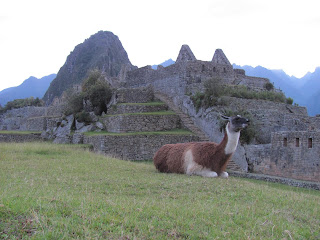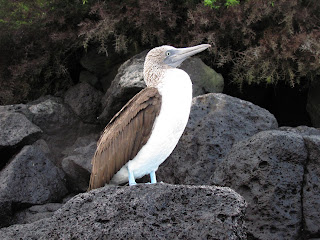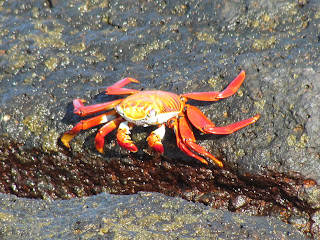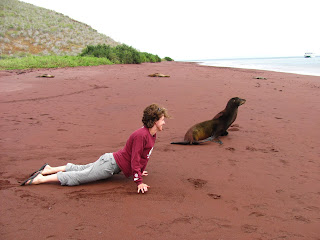This sign makes me wonder who exactly "Responsalisa" is and why she is in charge of keeping track of the company? Poor thing.
Anyway, getting back to Lake Titicaca. We loaded up a boat and putted along Lake Titicaca, which is very, very high (3,812 meters or 12,500 ft., to be exact). It is one of the highest commercially navigable lakes in the world.
The boat we were on was ridiculously slow, but we eventually arrived at the floating islands of the Uros people. These people are incredible and industrious, making islands out of nothing more than dried totora reeds and their roots. Here, a small scale version of what goes into each island:
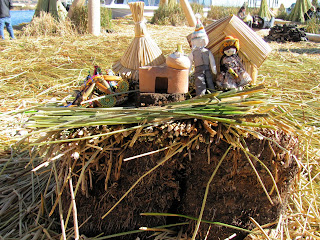
On the bottom, roots from the totora reeds. Above that, layers of dried totora reeds are placed in alternating directions to form the floor of the islands. On top of that, they build houses, kitchens, decorative arches, and boats out of these same reeds. The islands are then anchored to the bottom of the lake by ropes. Walking on the islands, you definitely notice that you're not on solid ground. The surface is squishy, and you really do sink down a little bit with every step. It's pretty amazing, though, that these people have come up with so many ways to use a single plant. They even eat the reeds, and were nice enough to give us a sample.
When the outer layers are peeled back like a banana, the inside is crispy and refreshing, but lacking in flavor.
Nicole, Erica and Kristi are pictured here enjoying the presentation by our guide and one of the residents of the island we visited.

The Uros people themselves were extremely friendly and outgoing, and even waved to us from their island as our boat passed by. The decorative things they make (i.e. the fish and other decorations pictured here) give each island its own character.
One little girl in particular caught our attention, as she was holding a rather large package in her arms. We asked her what she had inside the blanket, and she told us that it was her brother. We tried and tried to get her to show us her baby brother, but she would not. We did hear evidence of his existence, though, as he began to cry at one point.
The Uros people have such a beautiful, bright and cheerful style of dress, and the textiles they sell are gorgeous as well. Unfortunately, I had run out of room in my backpack by this point, so I was unable to buy any of their goods. But, here's a picture of some people selling some of their handiwork:


After the floating islands, we took the boat for another 2 hours to the island of Taquile. This is another island full of rich culture and traditions. The people speak Quechua, and have all sorts of different ways of indicating who is married or single, of asking someone out on a date (the girl asks the boy in this culture), and of helping their spouses (the women cut their hair after the wedding and weave it into a thick belt, which the men wear to support their back while doing heavy lifting).
Above is the hat that a single person would wear (the white top is supposed to indicate that there is a part of their life that is not yet fulfilled), while a married person's hat would be completely full of color. No comment.
This is an example of a belt with a woman's hair woven into it.
After this brief presentation, we danced with them and then were treated to a great lunch out in the open air. It was wonderful! The views on this island were spectacular, too, with a snow-capped mountain in Bolivia in the far distance and clear, blue water all around.
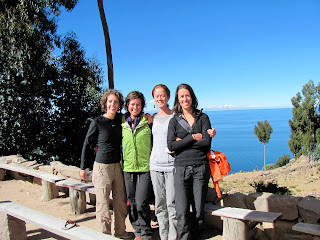

In addition to having so many neat traditions, the people on this island also do cool things like recycle the soles of old sandals and shoes and use them for things like gate springs.

Overall, the trip to Lake Titicaca was enjoyable and memorable, even despite my terrible memory. It was fun to hang out with the 3 sisters from Minnesota, and to get to experience a way of life that is completely unique.


















